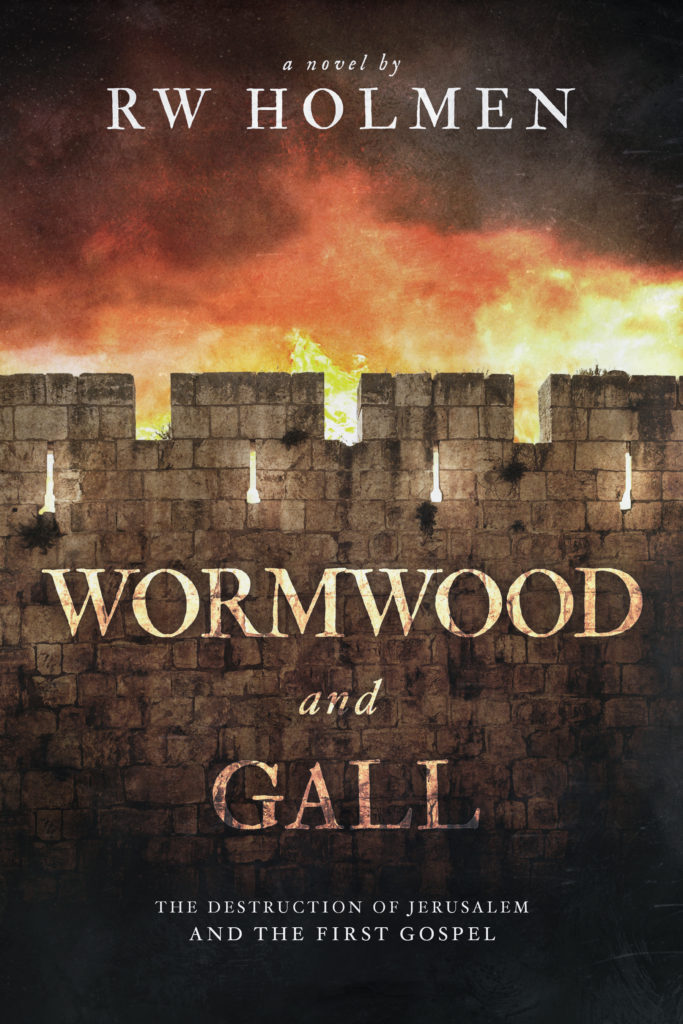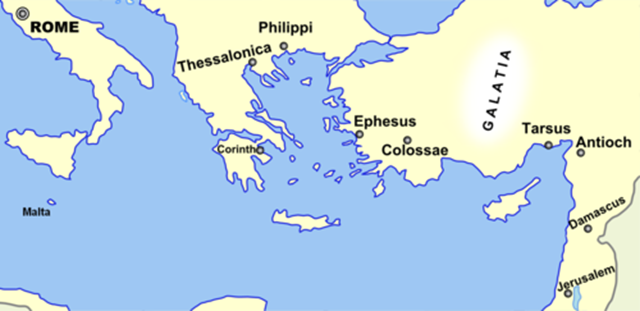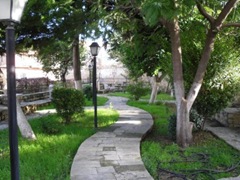Wormwood and Gall: The Destruction of Jerusalem and the First Gospel will soon be released. This sequel to A Wretched Man has been in the works for some time. The novel fictionalizes the scribe who penned a narrative to uplift the discouraged remnant of the Christian community as Jewish civil war raged and the Roman Legions destroyed the Jerusalem temple around 70 CE. Of course, the narrative comes down to us as “The Gospel According to Mark.”
A lament for Jerusalem inspires our title:
How lonely sits the city that once was full of people! How like a widow she has become, she that was great among the nations! She that was a princess among the provinces has become a vassal.
The thought of my affliction and my homelessness is wormwood and gall! My soul continually thinks of it and is bowed down within me. But this I call to mind, and therefore I have hope: The steadfast love of the Lord never ceases, and his mercies never come to an end; they are new every morning; great is your faithfulness.
Lamentations 1:1 & 3:19-22
On a late summer’s day during the reign of Emperor Vespasian, the world seemingly ended for the Hebrew people of Palestine; tens of thousands died as Roman legions torched Jerusalem and demolished the Holy Temple, the very dwelling place of the Lord God Almighty of Israel. As blood-swollen gutters ran red and the smoke of hellfire blackened the sky, where was God? Was there meaning to life? To death?
The cataclysmic destruction of Jerusalem in 70 CE followed nearly a century of restless churning as the long-suffering Hebrews of Judea and Galilee agitated against Roman Imperial oppression. A Galilean, Jesus of Nazareth, was one of many executed as a perceived threat to Roman authority and the Romanizing sympathizers within Jewish society, including aristocratic priests appointed by authority of the Romans.
As the family and friends of Jesus struggled to keep his movement alive after his crucifixion around 30 CE, a Greek-speaking outsider appeared and dared to promote Jesus as a Hebrew messiah to a Gentile (non-Jewish) world. Paul the apostle spread Jesus’ good news across the provinces of the Roman Empire but not without encountering imperial hostility while simultaneously offending the sensibilities and traditions of the elders back in Jerusalem. Along with establishing a network of Gentile churches, Paul also wrote letters that became the first documents of Christendom, dating to the period 50-58 CE, and recognized as authoritative for the church by the mid-second century.
Three decades after the crucifixion of Jesus, Paul was executed in Rome by order of Emperor Nero, and so was Peter, foremost among the disciples of Jesus. Meanwhile, back in Jerusalem, Jesus’ own brother James (Ya’akov in Hebrew/Aramaic), who led the Jerusalem remnant of Jesus’ followers, was executed by order of the High Priest. Their violent deaths marked the passing of the first generation of the church.
This early church history provided the setting for the author’s earlier work entitled, A Wretched Man, a novel of Paul the apostle. The present work, Wormwood and Gall, is the sequel. A Wretched Man concluded in the early 60s CE, and Wormwood and Gall begins in 66 CE.
By then, the bubbling cauldron of sectarian strife and anti-Roman sentiment was ready to boil over. Zealot revolutionaries took up arms against the vaunted Roman legions; initial successes chased the Romans from Palestine but unleashed internal power struggles and bloodletting of the priestly aristocracy that was believed to be sympathetic to Rome. When the vengeful Roman legions returned, they swept through the Galilee, leaving cities and villages ablaze and the countryside littered with rotting corpses on crosses. Refugees swelled Jerusalem like goats herded to the slaughter pens.
In the spring of 70 CE, the legions set upon Jerusalem and raised their siege engines and ramparts and launched their catapults. As the summer sun spiked hot, the city’s defenses weakened, and before autumn arrived, the temple fell on the 9th day of the Hebrew month of Av. Months after the killing and dying finally ceased, winter rains doused the smoldering ruins and washed the blood and ash from the single wall that remained standing from God’s magnificent marble temple.
The Great Roman-Jewish War was a watershed moment–no, more than that, an apocalypse in which the end of the world seemed near–not only for the Hebrew people, but also for emerging Christianity, and Wormwood and Gall remembers this oft-forgotten setting for an early, important chapter in the history of the church. Amid death and destruction, the dispirited remnant of the followers of Jesus, who had been awaiting the return of their crucified messiah for four decades, needed encouragement and words of hope. In response, an unknown person compiled the good news narrative that has come to be known as “the Gospel according to Mark,” the next document of Christendom following Paul’s letters. What is more, this first gospel served as template and principal source document used by the later compilers of the gospels of Matthew and Luke. John, the fourth canonical gospel, came later still from a different stream of tradition. Although a scholarly consensus agrees with this context and chronology for the development of the gospel tradition, not much more is known about the individuals behind the gospels.
Wormwood and Gall is a fictionalized account of the birth pangs of the early church against the background of revolution, civil war, and apocalyptic devastation. This novel’s characterization of the gospel’s compiler is entirely fictional as history remembers virtually nothing about the actual person behind the gospel compilation–not even his real name. The gospel document does not identify its author. The terminology “the Gospel according to Mark” dates to a 2nd century identification of an associate of Peter, but current scholarship doubts that association. However, for the sake of consistency and familiarity, the novel’s principal character shall be named Markos, the Greek form of “Mark”.
Scholars have long looked to the “setting in life” as the starting point in analyzing ancient Biblical manuscripts. Although Wormwood and Gall fictionalizes the characters behind the compilation of this gospel, the novel attempts to accurately recreate the events, chronology, and apocalyptic milieu of the Great Roman-Jewish War as the setting that influenced the formation of the first canonical gospel, which in turn influenced the later gospels.




